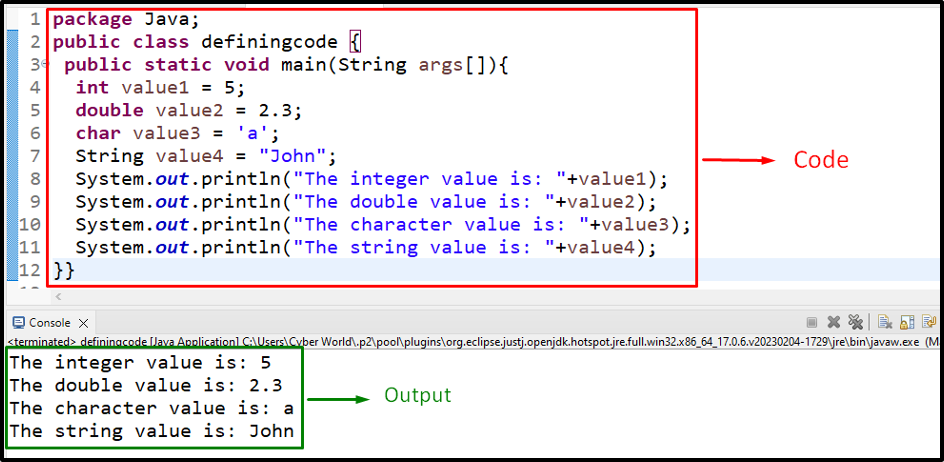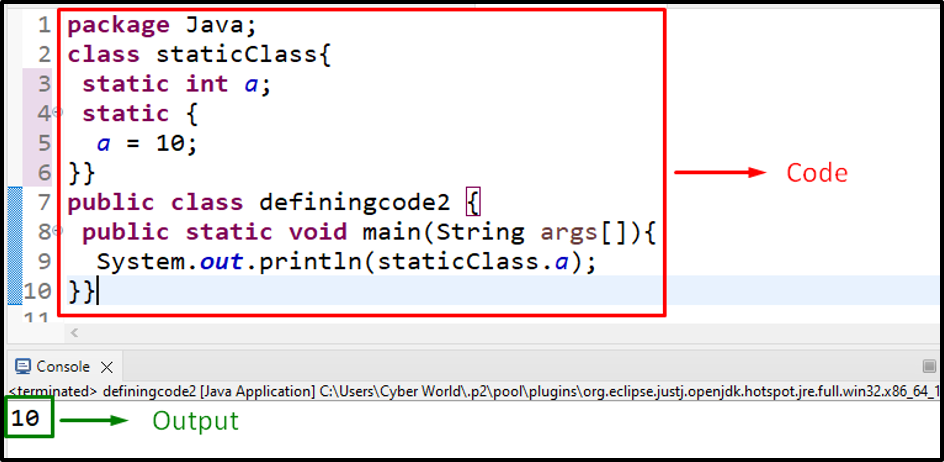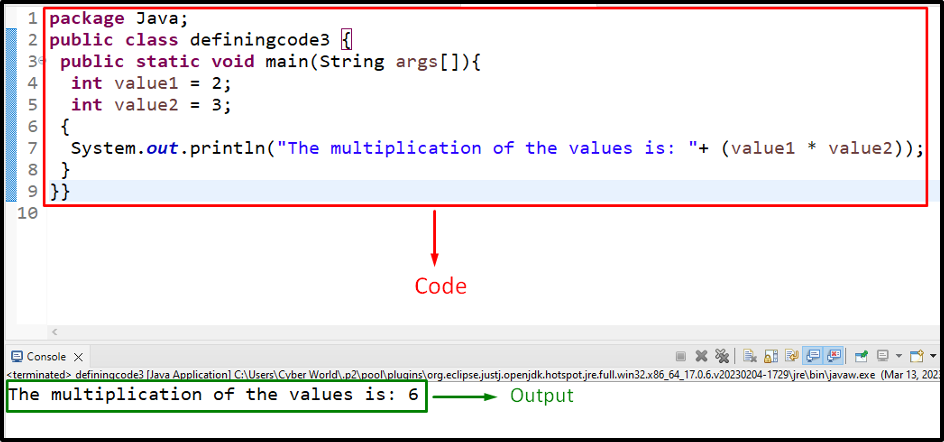This article will elaborate on defining a “code block” in Java.
How to Define a Code Block in Java?
A code block is defined with the help of the “curly braces{ }” and contains a section of code in it. This code can comprise one or multiple statements.
Example 1: Defining a Code Block in Java With a Single Statement
In this example, a code block can be defined with a single accumulated statement:
In this code, simply define a code block via curly braces, i.e., “{ }” and contain a single statement indicating the initialization of an integer.
Note: This code block cannot yield any outcome since the value is initialized but not printed.
Example 2: Defining a Code Block With Multiple Statements Comprising Multiple Data Types in Java
This example can be utilized to define a code block having multiple statements of various data types:
public static void main(String args[]){
int value1 = 5;
double value2 = 2.3;
char value3 = 'a';
String value4 = "John";
System.out.println("The integer value is: "+value1);
System.out.println("The double value is: "+value2);
System.out.println("The character value is: "+value3);
System.out.println("The string value is: "+value4);
}}
According to this code snippet, likewise, define a code block and initialize the values comprising “integer”, “double”, “char”, and “String” data types, respectively, and print them individually.
Output
In this output, it can be analyzed that the initialized values are displayed accordingly.
Example 3: Defining a “Static” Code Block in Java
In this particular example, a “static” code block can be defined within the class.
Note: The static blocks can be invoked with the help of the “class” directly regardless of the created class object.
Now, let’s move on to the below-provided example:
In the above code block, perform the below-provided steps:
- Define a class named “staticClass”.
- In its definition, specify the static integer variable.
- Now, define a “static” code block initializing the value of the specified variable.
- Lastly, in the “main()” method, invoke the defined integer via the “class” directly.
Output
In this outcome, it can be seen that the defined value is invoked appropriately.
Example 4: Defining a “Nested” Code Block in Java
In this particular example, a nested code block can be defined within a code block:
In the above lines of code, similarly, define a code block. Within this block, initialize the stated two integer values. After that, return the multiplication of the initialized values in another “nested” code block.
Output
As observed, the nested code block functions properly.
Example 5: Defining a “Function(Code Block)” and Invoking it in the “main()(Code Block)” in Java
Here, a function can be defined in a code block and invoked in a separate code block in the “main()” method:
In the above code snippet:
- Define a code block and declare a function named “displayMultiplication()”.
- In its parameters, specify the variables that need to be multiplied.
- In the function definition, multiply the passed numbers and store the resultant multiplication in a separate variable, i.e., “c”.
- Finally, in the “main()” method, define a code block, invoke the defined function, and pass the stated integers, as its argument.
Output
This outcome signifies that the multiplication is returned appropriately.
Conclusion
A code block in Java is defined with the help of “curly braces{ }” and contains a section of code in it. This code can contain one or multiple statements. Also, a nested code block and separate code blocks for function and the “main()” method can be defined. This blog demonstrated to define a code block in Java.




